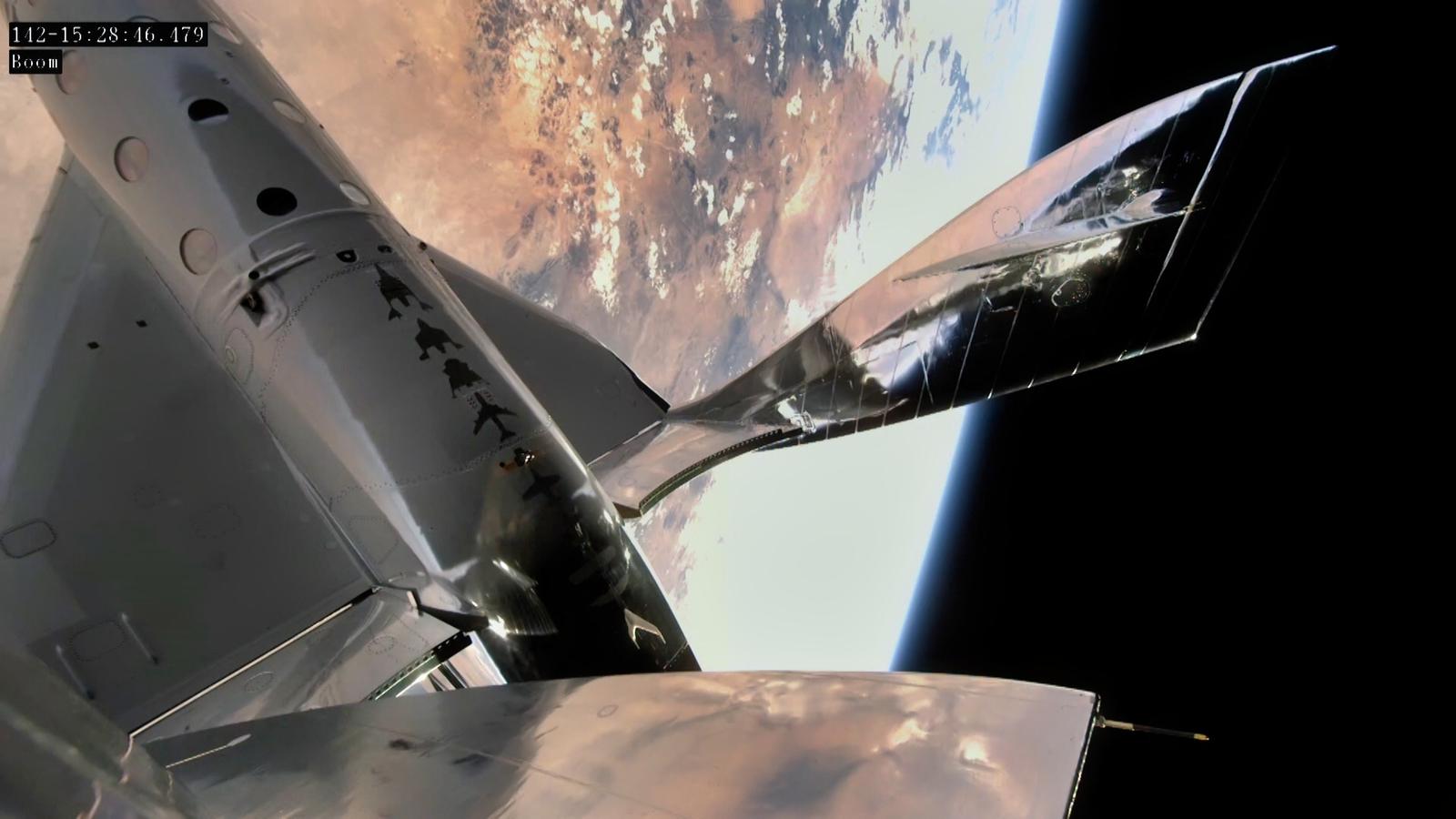Virgin Galactic’s SpaceShipTwo has flown to the edge of space
The space tourism company sent people to the very brink of suborbital space for the first time since February 2019. It marks the beginning of a busy year ahead.

On May 22, Virgin Galactic took two people to the very edge of suborbital space for the first time in more than two years, and its third time overall. It’s the first of four planned crewed missions slated for this year.
What happened: Virgin Galactic’s SpaceShipTwo took off from Spaceport America in New Mexico at 10:34 a.m. US Eastern Time Saturday. The spacecraft, named VSS Unity, was carried into the air via a large cargo aircraft. At 11:26 a.m., Unity was released, fired its engines, and headed to a peak altitude of 89.2 kilometers (just passing the US Air Force and NASA's definition for where space begins at 80 kilometers, but falling short of the internationally recognized boundary of 100 kilometers). It then headed back to the surface and made a runway landing at Spaceport America just 17 minutes later. The mission also carried research experiments under NASA’s Flight Opportunities program.
Why this is a big deal: Virgin Galactic hasn’t gone to space since February 2019, when it flew three people on a single mission. That was a milestone launch (the second time the company reached outer space and the first time it carried passengers), but it also resulted in a damaged horizontal stabilizer that led to a safety review and renovations. Saturday’s flight was the first time those upgrades have been tested in full spaceflight. The company attempted to return to space last December, but that mission was aborted midflight because of electromagnetic interference.
This was also the first spaceflight launched from New Mexico (now the third US state to launch humans into space). Virgin Galactic intends to conduct all its commercial flights from Spaceport America, with the goal of launching 400 flights a year.
Big year ahead: In many ways, 2021 is a make-or-break year for Virgin Galactic. It was founded in 2004 by Richard Branson with the hopes of making space tourism a reality. But the company has been constantly beset by development delays and quite a few high-profile failures (the October 2014 crash of the first SpaceShipTwo that led to the death of a pilot is still fresh in people’s minds). For the company to reach 400 flights a year, it will need to prove it can fly quickly, consistently, and safely.
To that end, Virgin Galactic plans to fly crewed missions into space three more times this year—once with two pilots and four company employees as passengers, once with Branson as a passenger, and once as a commercial flight for the Italian Air Force. That last mission will be the first time Virgin Galactic takes customers into space, and should lead to $2 million in revenue. The company may also attempt glide flights for its newly unveiled SpaceShipThree this summer. All of this activity is presumably supposed to set the company up for commercial operations as early as next year.
Meanwhile, Virgin Galactic’s main competition for the space tourism market, Blue Origin, plans to fly a crewed mission into space for its first time on July 20, when a crew of six will ride a New Shepard vehicle into suborbital space.
Deep Dive
Space
The search for extraterrestrial life is targeting Jupiter’s icy moon Europa
NASA’s Europa Clipper mission will travel to one of Jupiter's largest moons to look for evidence of conditions that could support life.
How to safely watch and photograph the total solar eclipse
The solar eclipse this Monday, April 8, will be visible to millions. Here’s how to make the most of your experience.
How scientists are using quantum squeezing to push the limits of their sensors
Fuzziness may rule the quantum realm, but it can be manipulated to our advantage.
Stay connected
Get the latest updates from
MIT Technology Review
Discover special offers, top stories, upcoming events, and more.